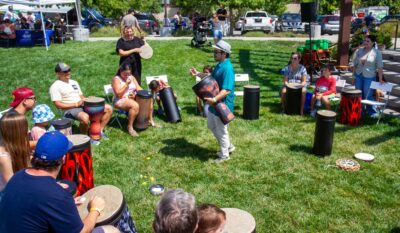Santa Clarita Valley water users are paying down the debt incurred by the Castaic Lake Water Agency for money they had expected to receive from developers – but didn’t.
On Monday, members of the agency’s Budget and Rates Committee approved a budget for the 2017/18 fiscal year, agreeing to recommend the agency’s board of directors adopts it later this month.
The budget shows SCV water users are covering a shortfall in money expected – but never received – from developers who stopped building after the housing market crash of 2008.
Since the recession, which put the brakes on housing development, the agency has not collected what it had hoped to collect from developers.
A revived economy, however, has resulted in more money being collected from developers this year than last.
Money from developers dropped to their lowest point in ten years during the 2008/09 fiscal year, amounting to $1.82 million, according to a report for the agency. The amount has climbed back steadily and slowly each year since then, hovering around $8 million since about four years ago, despite a dip to $6.74 million in the 2015/16 fiscal year.
With virtually no houses being built, no water hookups were needed which meant no fees – called Facility Capacity Fees (FCF) – were paid to the CLWA.
By 2012, the agency’s FCF fund had dried up.
And, since the agency used the FCF fund to pay the debt for “future users,” it had to get the money from somewhere else.
Agency officials looked toward the money they collected each year from SCV ratepayers to make up for that shortcoming.
Depleted fund
Committee members learned Monday that, according to the report prepared on the proposed budget: “Beginning in the fiscal year 2012/13, the agency’s FCF fund was depleted and was unable to pay future users’ debt obligations.
The report went on to state: “While revenue levels are starting to increase, they are still below the revenue required to fully fund future users’ debt service for the next few years.
“At this time, one percent property tax revenues are paying a significant portion of the future users’ debt service that should be funded by facility capacity fees.
“This is considered an interfund loan, and future facility capacity fees will repay the one percent property tax revenue fund with interest.”
In other words, CLWA needed to move money from one fund to another within the agency.
“Over time as these (FCF) fees come in, that money will be tracked and repaid,” said CLWA General Manager Matt Stone.
Brighter future
Water heads point out that the developers who own land also pay property taxes as have over the years.
“As new homes have been built and occupied by families in our community, they become part of the increase in total assessed value – and property tax revenue – for the valley,” Valerie Pryor, the agency’s assistant general manager, who presented the budget to the committee Monday.
“Put another way, much of the current community, was once ‘developer’ land, and now is part of the tax base supporting the costs of all public services funded with local property taxes,” she said.
“Their taxes are helping to pay for the schools, roads, city and county services, and yes, some of the water facilities that serve the community,” she said.
Facility Capacity Fees (FCF) make up nine percent of the proposed budget.
“As the community matures, the FCFs (developer fees) become less of a primary source,” Stone said.
The agency is expecting at least $94 million in revenue between July 2017 and June 2018.
About 59 percent of the agency’s budget comes from property taxes.
One percent
Los Angeles County collects one percent of a property’s value in taxes paid by the all property owners.
Only a “very small fraction” of that one percent, however, ends up at the CLWA.
“We get a very small fraction of that one percent,” Stone told The Signal Tuesday.
Property owned by governments, hospitals, schools and colleges and charities are exempt from one percent property taxes. All other properties are taxed, including vacant, residential, commercial and industrial property.
More than a quarter of the agency’s budget – 27 percent – is funded by this “fraction” of one percent property tax, which amounts to $24.7 million of the proposed budget.
Agency set tax
The agency takes another bite of the average water user’s property tax with what’s called the “Agency Set Property Tax” to help pay for the costs of water.
Whatever the agency pays to the state for buying and distributing the water it gets from Northern California as a State Water Project contractor, is a cost shared among all property taxpayers.
“We haven’t had to change that rate in a while,” Stone said. The tax rate has stayed the same since FY 2010/11.
A third of the agency’s budget – 32 percent – is paid by SCV property owners by this special property tax set by the agency.
Just like the 1 percent tax, the County collects the Agency Set Property Tax money and then gives it to the CLWA. CLWA in turns pays the State Department of Water Resources with these funds.
Selling water
Another quarter of the agency’s budget – 25 percent – comes from the water it sells to SCV’s four water retailers, or purveyors.
Ultimately, money paid by the average SCV water user buying their water from the retailers, goes to support the budget.
That leaves 16 percent of the agency’s revenue coming from someplace other than the average SCV water user in the form of investments, grants and reimbursements.
661-287-5527
on Twitter @jamesarthurholt







